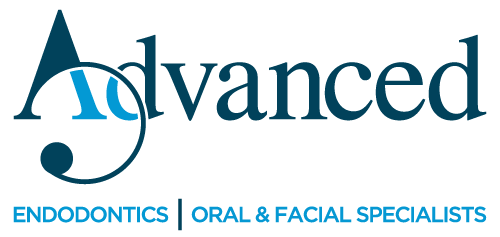Temporomandibular disorders (TMDs) are problems that affect your temporomandibular joint (TMJ), or jaw joint. They also can affect the muscles of the face that help you to chew. TMD is a general term, not a specific condition. There are several types of TMDs, each with its own name. Often, people will say they “have TMJ.” TMJ is the name of the normal joint, not a disease or condition.
If you place your fingers just in front of your ears and open your mouth, the movement you feel is your TMJ. It is a small ball-and-socket joint with three parts:
- The ball, called the condyle
- The socket, called the glenoid fossa
- A small, fibrous disk that sits between the condyle and the glenoid fossa
Studies estimate that 20% to 30% of people have TMD symptoms. Women are more than 3 times as likely as men to develop TMDs. This may be because the collagen that holds the disk in position between the ball and socket is structurally different in women. As a result, more women may have dislocated disks, which can lead to TMDs. Some studies also have shown that hormones such as estrogen play a role.
There are many different causes for TMD. Some of them include, but are not limited, these causes:
- Trauma to the jaw, either by a direct injury to the jaw or long-term clenching or grinding of the teeth (bruxism)
- Tension or stress, which triggers muscle spasms
- Poor alignment of the teeth (malocclusion)
- Arthritis of the jaw joint, such as rheumatoid arthritis or osteoarthritis
- Tumors of the jaw joint
Symptoms of TMD
TMDs have several symptoms:
- You feel pain or tenderness in the area in front of your ear, especially when you chew, speak or open your mouth wide
- Your jaw becomes stuck open or closed, or feels stuck
- You have spasms in your facial muscles. They may make it difficult to open your mouth or make it feel as though your teeth don’t meet normally.
- You hear clicking, popping or cracking sounds or feel a grating sensation in your jaw when you open or close your mouth
- You get headaches that tend to start in the front of the ear and spread to the rest of the head or neck
How to Diagnosis TMD
An important part of the diagnosis is reviewing the history of your problem. This includes how long you’ve had symptoms and when they occur.
Your dentist will:
- Look at the way your jaw moves
- Examine your teeth for signs of habits such as clenching or grinding (bruxism)
- Feel around the TMJ and the muscles of your jaw and neck for signs of tenderness
The dentist might use a stethoscope to listen for joint sounds that would suggest a disorder involving the disk or bones of the joint.
Your dentist will determine whether your problem is a muscle disorder or if it involves the bones or disk of the joint. Usually, a regular X-ray or a panoramic X-ray can rule out a serious disorder within the joint.
If a more detailed view of the joint is necessary, magnetic resonance imaging (MRI) or a computed tomography (CT) scan might be used.
The exam also will be used to check for other conditions that could be causing your symptoms. Examples include arthritis, sinus infections, toothache, earache and neurological problems. These conditions and TMDs have similar symptoms.
If you think you have TMD, your dentist or physician can refer you to see a specialists trained to diagnose and treat this condition. The two specialists trained specifically for TMD management are called Orofacial Pain Specialists and Oral & Maxillofacial Surgeons.
Expected Duration of TMD
Some TMDs can last for only a few weeks – for example, when they are caused by injury to the jaw. Other types of TMD, such as a problem caused by arthritis or bruxism, can last months or even years, depending on how they respond to treatment.
Prevention of TMJ Issues
TMD caused by grinding or clenching can treated by using a custom occlusal orthotic, also known as an occlusal guard or splint. This is a molded piece of acrylic made by your dentist to fit around your teeth and protect them. Its main purpose is to keep your teeth slightly apart, help your jaw muscles and your joint relax and reduce pain. It also protects your teeth, crowns, implants or any other restorations from fractures and severe wear that can come as a result of constant grinding and clenching. An occlusal guard is also called a night guard, though some people wear it in the daytime.
To help you deal with stress, you may decide to see a psychologist or therapist. Relaxation, massage therapy, or biofeedback may also help reduce stress.
Top Treatments to Alleviate TMD Symptoms
The treatment of a TMD depends on its cause and severity. While there is no single cure for TMD, there are different treatments that may reduce your symptoms dramatically. Most TMDs are related to sore muscles that sometimes have spasms. This type of TMD usually responds to conservative treatment. Your dentist may recommend one or more of the following:
- Medications – such as muscle relaxants, anti-inflammatory drugs, steriods, etc.
- Apply moist heat to sore muscles
- Botox injections – reduce muscle thickness and tightness without having to take medications orally.
- Wear a night guard – reduce the harmful effects of tooth clenching and grinding by wearing a night guard or splint.
- Relax – learning relaxation techniques to help control muscle tension in the jaw. Your dentist may suggest you seek training or counseling to help eliminate stress
Other treatment examples include:
- Soft diet — Avoid hard or crunchy foods. Don’t bite into large items, such as a thick sandwich, with your front teeth. Instead, cut food into small pieces and chew with your back teeth.
- Physical therapy — This can include heat, massage and ultrasound.
- Bite adjustment — This might include reshaping teeth slightly so that they meet properly.
- Replacement of missing teeth
If these measures do not help, surgery might be considered. Arthroscopic surgery often is an option. This technique uses two or three very small incisions around the TMJ. A tiny camera is inserted through one incision. Surgical instruments are inserted through one or two other incisions. Inflamed tissue is removed and the joint is rinsed.
More invasive surgery might be necessary in rare cases, if the jaw locks because of a dislocation or scarring. The surgeon will remove or adjust the obstructing disk.
When To Call a Professional
Call your doctor if:
- Your jaw movement is limited
- You have injured your jaw and are taking over-the-counter pain medicine, but the pain doesn’t go away after several days
- You have swelling in the area of your TMJ
- Jaw pain keeps you up at night or makes eating difficult
- You have frequent headaches
With proper care and control of habits, the symptoms should go away. Some cases may go away in less than a month. Other cases, such as those involving arthritis or people with long-standing or severe bruxism, may take longer.
CONTACT US for a consultation so we can determine if your symptoms are related to TMD and then what your next steps should be.

